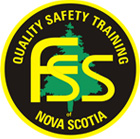Operator Diagnosed with Carpal Tunnel
Hazard Alert
Harvesting Operator Diagnosed with Carpal Tunnel Syndrome
A harvesting operator experienced pain in his wrists beginning in November 2006. He visited the doctor on January 22, 2007, and was diagnosed with carpal tunnel syndrome in both wrists. The doctor attributed the cause to be the repetitive movements of operating the same machine for 11 years. The operator was scheduled for surgery to repair the condition. The operations took place on December 4 and 18, 2007.
Recommendations to Prevent a Recurrence
Workers can do on-the-job conditioning, perform stretching exercises, take frequent rest breaks, wear splints to keep wrists straight, and use correct posture and wrist position.
Wearing fingerless gloves can help keep hands warm and flexible.
The following internet links provide extensive information on carpal tunnel syndrome:
http://www.ninds.nih.gov/disorders/carpal_tunnel/detail_carpal_tunnel.htm#102453049
http://www.nycmetrorid.org/overuse.htm#exercises
http://www.defenselink.mil/news/newsarticle.aspx?id=42261
http://www.tidbits.com/resources/534/caring-for-wrists.html
General Information on Carpal Tunnel Syndrome
Possible Signs of Carpal Tunnel Syndrome
- Pain, tingling, and numbness in the thumb, index, middle or ring fingers, or tingling in the entire hand.
- Pain that shoots from the hand up the arm as far as the shoulder.
- A swollen sensation in your fingers, although they may not be visibly swollen.
- You may notice that your symptoms are worse at night.
- Your hands feel weak in the morning.
- You drop objects more than usual.
- You have trouble grasping or pinching objects.
- You have trouble using your hands for certain tasks, such as buttoning a shirt, handwriting, or opening a jar lid.
- The muscles at the base of your thumb are smaller and weaker than they used to be.
Prevention
Workers can do on-the-job conditioning, perform stretching exercises, take frequent rest breaks, wear splints to keep wrists straight, and use correct posture and wrist position. Wearing fingerless gloves can help keep hands warm and flexible.
Here are a few exercises to help prevent the condition:
- Get a soft foam ball, hold it in your hand, and with your palm turned up, gently squeeze 10 to 15 times. Do this several times a day with each hand. As with any exercise, do not do this if it hurts.
- Stretch your fingers apart, trying to make your hand as big as possible. Hold the stretch for a few seconds, then curl your fingers inward without clenching. Keep your fingers curled for a few seconds before repeating.
- Periodically drop your hands to your sides and shake them gently as though you were trying to shake off drops of water. This helps restore circulation and reduce carpal tunnel compression.
